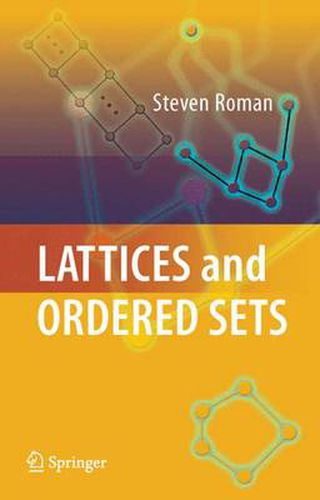Readings Newsletter
Become a Readings Member to make your shopping experience even easier.
Sign in or sign up for free!
You’re not far away from qualifying for FREE standard shipping within Australia
You’ve qualified for FREE standard shipping within Australia
The cart is loading…






This title is printed to order. This book may have been self-published. If so, we cannot guarantee the quality of the content. In the main most books will have gone through the editing process however some may not. We therefore suggest that you be aware of this before ordering this book. If in doubt check either the author or publisher’s details as we are unable to accept any returns unless they are faulty. Please contact us if you have any questions.
This book is intended to be a thorough introduction to the subject of order and lattices, with an emphasis on the latter. It can be used for a course at the graduate or advanced undergraduate level or for independent study. Prerequisites are kept to a minimum, but an introductory course in abstract algebra is highly recommended, since many of the examples are drawn from this area. This is a book on pure mathematics: I do not discuss the applications of lattice theory to physics, computer science or other disciplines. Lattice theory began in the early 1890s, when Richard Dedekind wanted to know the answer to the following question: Given three subgroups EF , and G of an abelian group K, what is the largest number of distinct subgroups that can be formed using these subgroups and the operations of intersection and sum (join), as in E?FssDE?FN?GssE?DF?GN and so on? In lattice-theoretic terms, this is the number of elements in the relatively free modular lattice on three generators. Dedekind [15] answered this question (the answer is #)) and wrote two papers on the subject of lattice theory, but then the subject lay relatively dormant until Garrett Birkhoff, Oystein Ore and others picked it up in the 1930s. Since then, many noted mathematicians have contributed to the subject, including Garrett Birkhoff, Richard Dedekind, Israel Gelfand, George Gratzer, Aleksandr Kurosh, Anatoly Malcev, Oystein Ore, Gian-Carlo Rota, Alfred Tarski and Johnny von Neumann.
$9.00 standard shipping within Australia
FREE standard shipping within Australia for orders over $100.00
Express & International shipping calculated at checkout
This title is printed to order. This book may have been self-published. If so, we cannot guarantee the quality of the content. In the main most books will have gone through the editing process however some may not. We therefore suggest that you be aware of this before ordering this book. If in doubt check either the author or publisher’s details as we are unable to accept any returns unless they are faulty. Please contact us if you have any questions.
This book is intended to be a thorough introduction to the subject of order and lattices, with an emphasis on the latter. It can be used for a course at the graduate or advanced undergraduate level or for independent study. Prerequisites are kept to a minimum, but an introductory course in abstract algebra is highly recommended, since many of the examples are drawn from this area. This is a book on pure mathematics: I do not discuss the applications of lattice theory to physics, computer science or other disciplines. Lattice theory began in the early 1890s, when Richard Dedekind wanted to know the answer to the following question: Given three subgroups EF , and G of an abelian group K, what is the largest number of distinct subgroups that can be formed using these subgroups and the operations of intersection and sum (join), as in E?FssDE?FN?GssE?DF?GN and so on? In lattice-theoretic terms, this is the number of elements in the relatively free modular lattice on three generators. Dedekind [15] answered this question (the answer is #)) and wrote two papers on the subject of lattice theory, but then the subject lay relatively dormant until Garrett Birkhoff, Oystein Ore and others picked it up in the 1930s. Since then, many noted mathematicians have contributed to the subject, including Garrett Birkhoff, Richard Dedekind, Israel Gelfand, George Gratzer, Aleksandr Kurosh, Anatoly Malcev, Oystein Ore, Gian-Carlo Rota, Alfred Tarski and Johnny von Neumann.